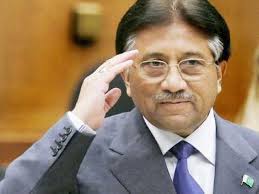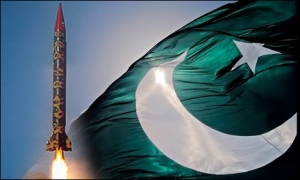 My last post took issue with the historical amnesia of some Indian political leaders regarding the record of diplomatic engagement with Pakistan. I turn my attention now to the self-serving reading of the 1999 Kargil mini-war between the two countries being offered by Pervez Musharraf, who was Pakistan’s army chief at the time and is currently in the dock facing charges of high treason for suspending the Constitution and implementing emergency rule in 2007.
My last post took issue with the historical amnesia of some Indian political leaders regarding the record of diplomatic engagement with Pakistan. I turn my attention now to the self-serving reading of the 1999 Kargil mini-war between the two countries being offered by Pervez Musharraf, who was Pakistan’s army chief at the time and is currently in the dock facing charges of high treason for suspending the Constitution and implementing emergency rule in 2007.
In remarks the other week, Musharraf claimed he initiated the conflict in order to retaliate against India’s military intervention into the 1971 political crisis in East Pakistan that eventuated into the creation of Bangladesh as well as India’s 1984 surprise seizure of the Siachen Glacier, an uninhabitable stretch of the Himalayas north of Kashmir that is contested by both militaries. As Musharraf boasted, “I believed in a tit-for-tat policy on all fronts.”
He has advanced this point before, such as in his 2006 memoir in which he contended that the Kargil operation was a splendid tactical success that was undone by the fecklessness of then- Prime Minister Nawaz Sharif. But the truth of the matter is far less flattering to Musharraf’s reputation as a military leader and to the Pakistani army’s claim of institutional competence.
The Kargil conflict, named for a town in the mountainous reaches of northern Kashmir around which the fighting took place, began in early 1999 when a sizeable Pakistani force (numbering at least 1,500 – 2,000 and perhaps more) of lightly-armed mountain infantry troops infiltrated across the Line of Control – as the Kashmir divide between Indian and Pakistani troops is called – and seized large swaths of rugged territory that had been vacated by Indian soldiers during the winter. By the time the intruders were discovered in May, they had occupied over 300 square miles of Indian territory and were in a position to interdict a strategic highway linking the Siachen Glacier to the rest of Kashmir.
In response, New Delhi launched a fierce and sustained counterattack. The ensuing two-month battle featured intense ground fighting, heavy artillery barrages and the first combat sorties undertaken by the Indian air force since the Bangladesh war. The crisis was finally defused by a combination of Indian battlefield successes and U.S. diplomatic intervention.
Significant details about the conflict remain a matter of debate, including the casualty figures. Two years ago, the Indian defense minister reported that 530 battle deaths occurred on the Indian side, though the Indian army’s official website lists the number at close to 1,000. And while Pakistan refuses to disclose its losses, observers estimate 400-700 fatalities.
Two recent sources have provided important clarification to parts of the historical record, however. The first is a 2009 study of the crisis that is the most authoritative to emerge to date. The second is a series of disclosures (here and here) made last year by retired General Shahid Aziz, who was the head of the analysis branch of the powerful Inter-Services Intelligence agency during the crisis. He would later go on to serve as director-general of military operations and chief of the general staff – both prestigious positions in the Pakistani army.
The two sources paint a far less heroic portrait than the one Musharraf supplies. To start, Musharraf and a handful of other military leaders planned the Kargil operation in such isolation that little thought was given to broader coordination within the Pakistani army as a whole, the other military services or the wider government. The lack of foresight resulted in utter disarray in Islamabad’s response once the Indians discovered the incursion. Aziz, for example, calls Musharraf’s scheme an “unsound military plan based on invalid assumptions, launched with little preparations and in total disregard to the regional and international environment.”
Moreover, the failure to prepare for the possibility of an Indian counterattack meant that no provision was made for troop reinforcement and logistical supply of units occupying captured territory. And Islamabad’s desperate insistence once the battle was joined that the intruders were not Pakistani soldiers but jihadis over whom it had little control all but foreclosed coming to their rescue. Aziz is particularly harsh on this latter point, excoriating Musharraf for sending men into battle without doing detailed planning and then abandoning them once the fighting began.
As I noted last year when Aziz’s disclosures first surfaced, Musharraf’s misleading puffery has relevance beyond the question of who bears personal blame for the Kargil fiasco. It taps into a false narrative long sustained by the Pakistani army, in which it is the only institution capable of safeguarding the nation’s well-being against India’s external depredations and the domestic follies of civilian-led administrations.
This line has decisively warped civil-military relations throughout Pakistan’s history. Musharraf used it to justify his coup against Nawaz Sharif a few months after the Kargil crisis wound down. And aided by subservient media outlets, it has been employed in the post-Musharraf period to undermine two successive elected governments seeking to improve relations with India, the first led by Asif Ali Zardari in 2008-2013 and now the one run by Sharif, who is back in a return engagement as prime minister. But as the record of the Kargil conflict makes clear, the army’s narrative is far from solid. The sooner it is discredited, the better for Pakistan’s development as a democratic polity.
I invite you to connect with me via Facebook and Twitter.
 This essay provides an overview of the ongoing quantitative and qualitative changes in Pakistan’s nuclear arsenal and their impact on deterrence stability vis-à-vis India. Prominent among these trends is a major expansion in fissile material production that enables the manufacture of lighter and more compact warheads optimized for battlefield missions; the development of cruise missiles and shorter-range ballistic missiles possessing dual-use capabilities; and a greater emphasis in doctrinal pronouncements on the need for strike options geared to all levels of conflict. Although these trends pose problematic ramifications for the risks of unauthorized and inadvertent escalation, deterrence stability in South Asia is not as precarious as many observers fear. The challenges of fashioning a robust nuclear peace between India and Pakistan cannot be lightly dismissed, however, and policy makers would do well to undertake some reinforcing measures.
This essay provides an overview of the ongoing quantitative and qualitative changes in Pakistan’s nuclear arsenal and their impact on deterrence stability vis-à-vis India. Prominent among these trends is a major expansion in fissile material production that enables the manufacture of lighter and more compact warheads optimized for battlefield missions; the development of cruise missiles and shorter-range ballistic missiles possessing dual-use capabilities; and a greater emphasis in doctrinal pronouncements on the need for strike options geared to all levels of conflict. Although these trends pose problematic ramifications for the risks of unauthorized and inadvertent escalation, deterrence stability in South Asia is not as precarious as many observers fear. The challenges of fashioning a robust nuclear peace between India and Pakistan cannot be lightly dismissed, however, and policy makers would do well to undertake some reinforcing measures.






